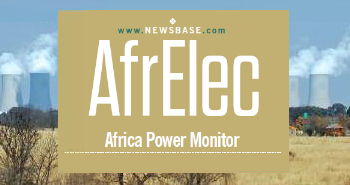Not in My Backyard: As Kenya’s nuclear ambitions advance, residents of proposed NPP site vow resistance

Kenya, which has targeted launching construction on its first nuclear power plant (NPP) in 2027, plans to build it coastal county of Kilifi, whose "pristine white beaches, turquoise waters, and rare mangrove forests make it one of Kenya's most popular tourist destinations," the Standard newspaper reported on September 22.
Following years of pre-feasibility studies, last year Kenyan authorities identified two prospective sites for a 1,000MW facility, which the government hopes will help meet rising demand for electricity.
However, the decision to site the plant within a conservation area has triggered substantial local opposition in Kilifi, raising important concerns regarding environmental safety, regulatory preparedness, and transparency, the Standard writes.
The Kenya Anti-Nuclear Alliance (Kana) argue that the plant will deepen the country’s already high debt load and has called for broader public awareness of the cost. A lawsuit filed in the environmental court in July 2023 on behalf of Kilifi residents, seeks to stop the plant, arguing that the process was “illegal” and public participation meetings “clandestine”.
In Kilifi, among the most prominent opponents is environmental activist Anthony Kingi. “We lack nuclear infrastructure, have an unstable power grid, and no regulatory framework for handling nuclear waste or emergencies,” he told the Standard.
Kingi further lamented the secrecy surrounding the project and the absence of community engagement. He and local organisations have also initiated petitions to halt the NPP construction, reflecting widespread anxiety about the ecological and social ramifications.
In March, Kenya’s Nuclear Power and Energy Agency (Nupea) revealed a strategic plan to advance its nuclear energy program over the next five years, preparing for the construction of its first facility, Enerdata reported.
Nupea plans to initiate construction of either a small modular reactor (SMR) or a conventional nuclear facility between 2027 and 2029, with operations expected by 2034 at the latest.
Amidst frequent blackouts and an unstable power grid, agency officials argue that nuclear energy is vital for ensuring long-term stability.
“If Kenya wants to industrialise, we need more baseload power plants,” Nupea’s director of publicity and advocacy, Basset Buyukah, told the Standard. “Coal and gas are too dirty, water unreliable in times of climate change, and geothermal power not flexible enough.”
With almost 90% of its electricity generated from renewable sources, Kenya stands as a global leader in generating clean energy, primarily due to its geothermal reserves, of which only 10% of the potential 10,000 MW is currently utilised. The remainder of its energy mix includes hydro, wind, solar, and a small portion of oil and gas.
Kenya further advanced its nuclear ambitions this month by signing a Memorandum of Understanding with the US Nuclear Regulatory Commission during the 2024 International Atomic Energy Agency General Conference in Vienna.
However, funding for the project remains uncertain in a nation grappling with significant debt, with Nupea exploring partnerships with countries like China or South Korea.
Kenya’s proposed NPP reflects a broader trend across Africa, where countries such as Ghana and Nigeria are increasingly looking towards nuclear energy to meet escalating demand for electricity as their populations and economies grow.


Follow us online